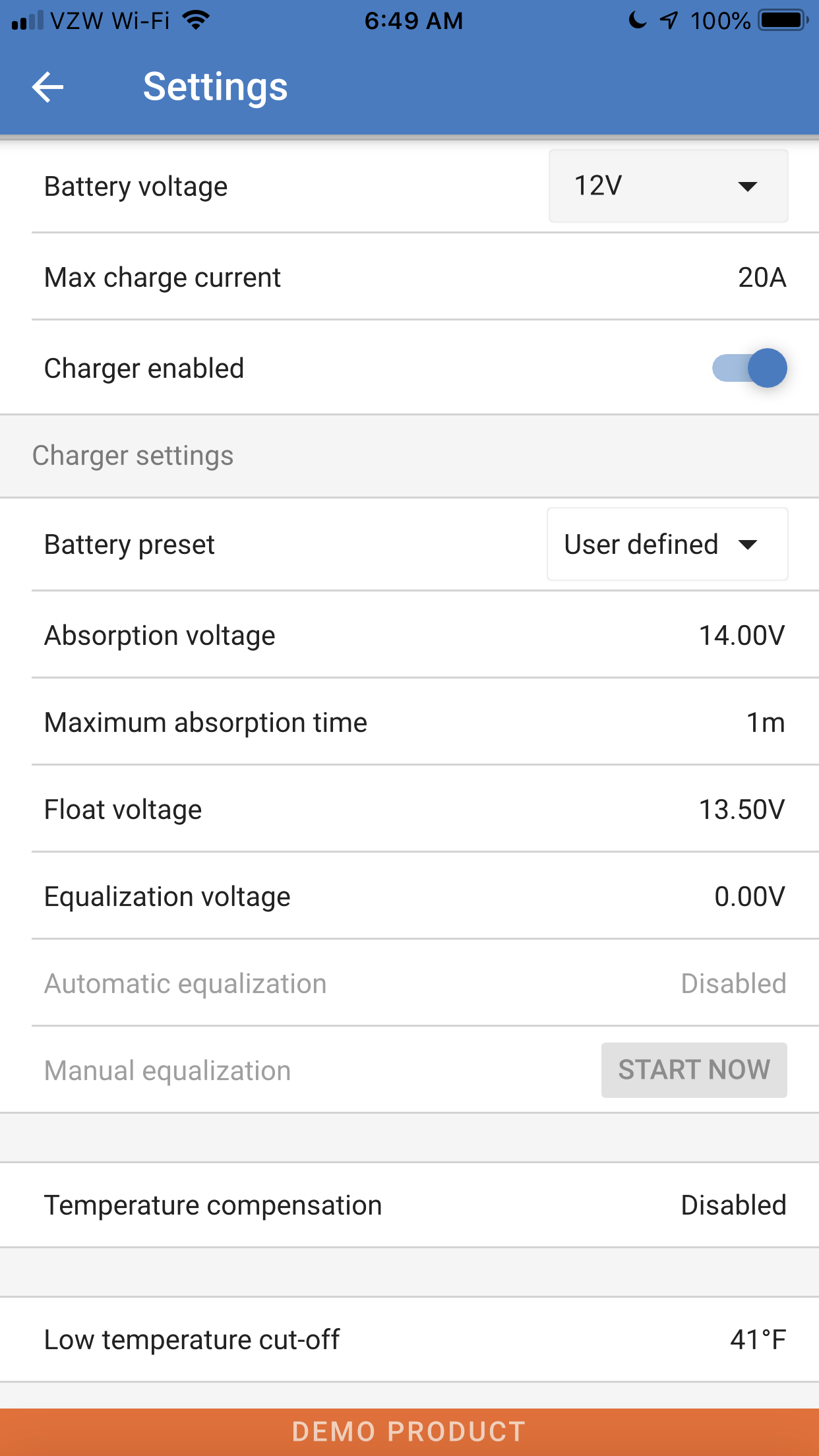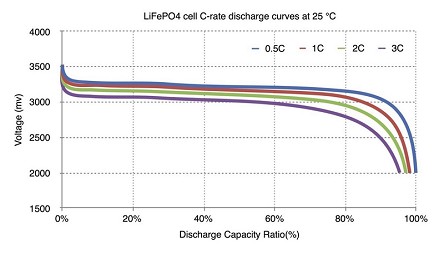Dear all, I’ve just bought a LiFePO4 battery for my van solar system and I want to make sure it lasts as long as possible. One of the main ways of doing this, if I understand correctly, is to have it stay in the range of 25-75% charge. On the lower end, I have a Battery Protect which I will simply configure to cut-off at 25%. My question is thus; how do I find out which voltage is equal to 100% and which voltage is 0%? Secondly, how do I configure my charge controller so that it stops charging at whichever voltage is equal to 75%? If it’s of any help, I attach both the battery specs from the manual and the options I have on the charge controller. Forgive me if this is basic, I tried researching but to no avail, mainly because I don’t really know what to look for. Many thanks.
- Home
- Anonymous
- Sign in
- Create
- Spaces
- Grafana
- Node-Red
- Unsupported topics
- Questions & Answers
- Modifications
- Communauté francophone
- Deutschsprachiger Bereich
- Preguntas en Español
- Explore
- Topics
- Questions
- Ideas
- Articles
- Badges
question
Changing maximum charge voltage
Look for LiFePo4 voltage curves. All drop in LFP batteries use almost identical curves. I like charging to 3.5V/cell, or 14.0V if trying to get max life. Anything under that isn’t necessarily extending its life, but will leave a lot of power unused.
The bottom cutoff should be around 3.0V-3.1V/cell or 12.0V-12.4V. If you have plenty of battery for your application, 12.4V will extend it’s life a bit more.
Hi Solardude, thanks for getting back to me. So in terms of the numbers you’ve mentioned, 3.5V and 3.0V, what does that equate to in terms of percentages? And how do I input this into the charge controller, is it the absorption voltage that needs to be changed? Many thanks.
Hi dk,
" So in terms of the numbers you’ve mentioned, 3.5V and 3.0V, what does that equate to in terms of percentages? " These are simply safe charge and discharge voltages for your cell. As a % wise it is simply too hard to guess without a (dialled in) battery SOC meter of some kind. A lithium cell will read 3.0-3.2v between 10-90% charge.
 Given the specs from your battery manufacturers, it would seem safe to apply the charging parameters from the Victron mppt. https://community.victronenergy.com/storage/attachments/6515-6856f4a3-88f5-4ef6-afe3-adf06cf52f73.png
Given the specs from your battery manufacturers, it would seem safe to apply the charging parameters from the Victron mppt. https://community.victronenergy.com/storage/attachments/6515-6856f4a3-88f5-4ef6-afe3-adf06cf52f73.png
Note the charge limit of 14.6 -+ 0.2v.
Note the DICSHARGE limit of 10v.
Note the STANDARD charge limit of 20a.
Note the ABSORB charge cut-out of 2a.
Hi klim8skeptic,
So effectively what I need to do is measure the voltages specific to my own battery by using, for example, a BMV and noting which voltages correspond to 100% et cetera.
Let’s say for example’s sake that the battery is fully charged at 14V, and fully discharged at 12V; this would mean that 10% is equal to 0.2V. What I want then, is to tell the charge controller to stop charging once it hits 13.6V, how do I do this? Do I simply plug 13.6 in the absorption voltage?

This is a screenshot of what your charger settings will look like. This handles the high side. For the low side, you will need a BP100, but make sure it is only on the discharge side. You cannot run charge current thru it.
You can also set the minimum discharge if you are using an inverter, but for just DC usage, you will need the BP100.
The BMV is just a monitor. You could configure it to cut power to a contactor at a specific voltage if you want. But easiest way is use a BP100.

12.0V is approx 10% SOC
12.4V approx 80% SOC
14.0V is approx 95% SOC
However this is slightly dependent on amperage when discharging and charging. I would make absorb settings 14.0V, 20A and absorb time 1 minute. Lifepo4 doesn’t need absorb time at that voltage/SOC.
Battery recomends up to 14.6V, but to make it last longer 14.0V is plenty
Thanks solardude, this is great and all makes sense now. All the best.
It is also dependent on temperature.
You really need a battery monitor of some kind to know the exact SOC.
Related Resources
Additional resources still need to be added for this topic
Did You Know - How to create a battery profile for non-Victron batteries?
Additional resources still need to be added for this topic
question details
15 People are following this question.
